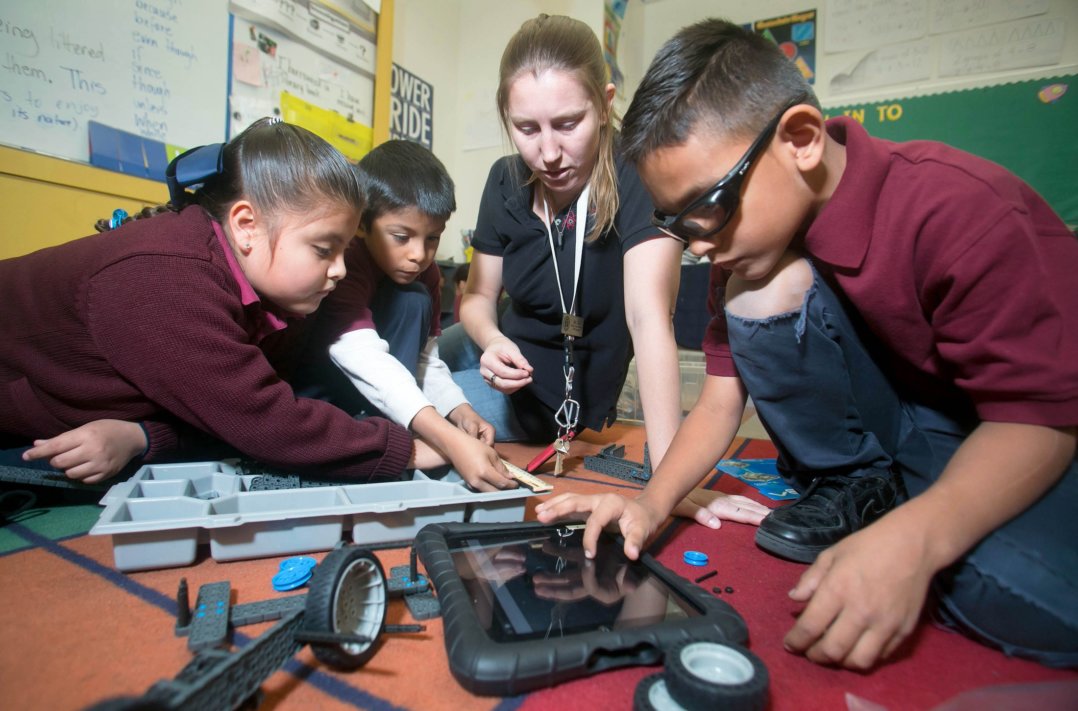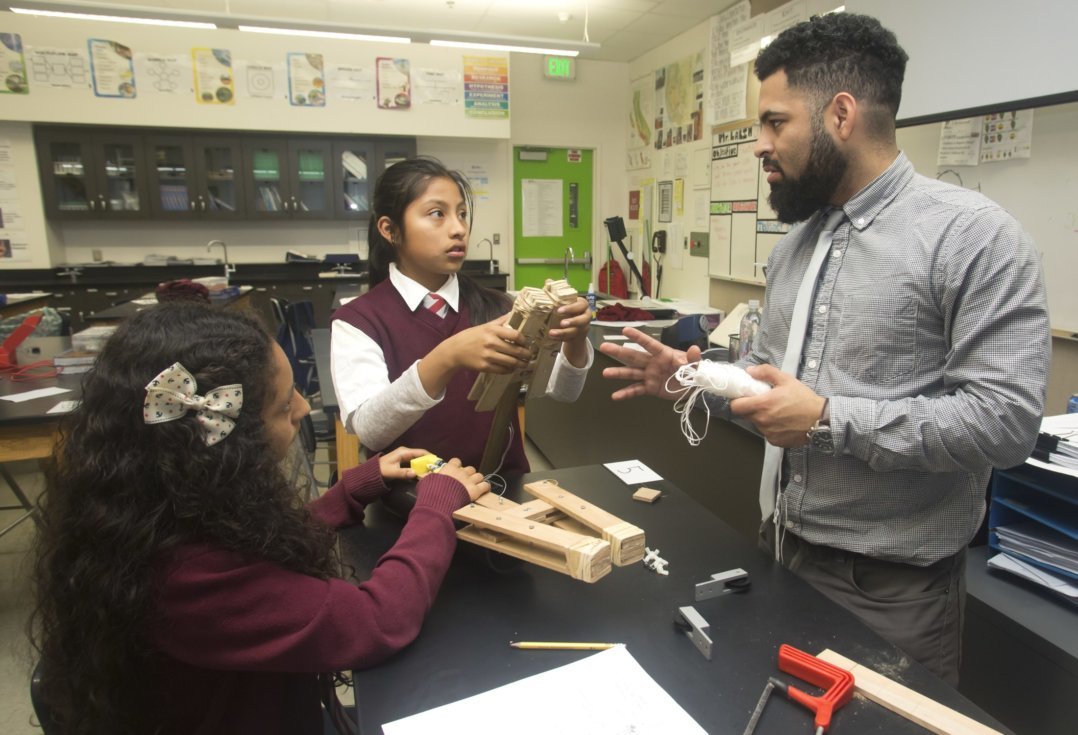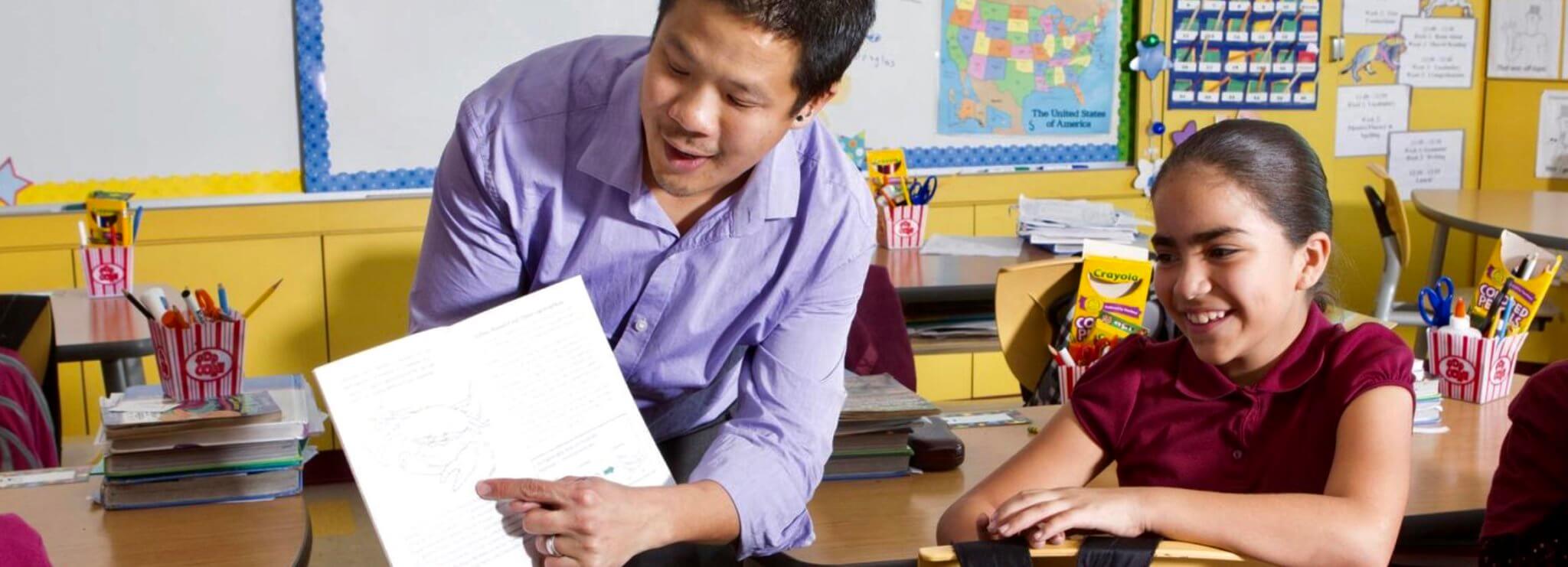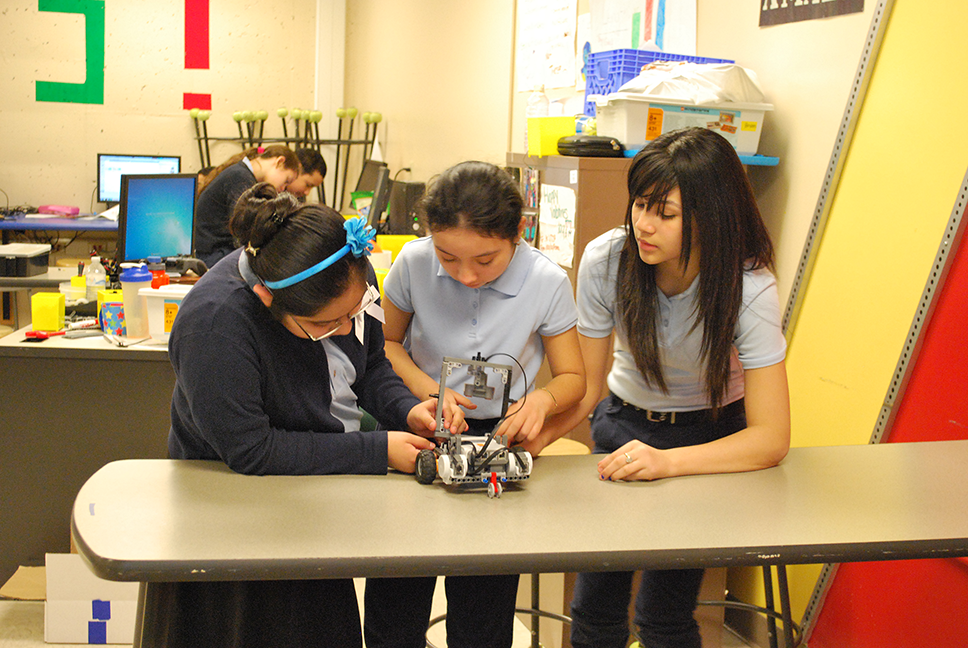How Public Charter Schools Have Uplifted Latino Communities Through the Pandemic and Beyond
This fall, UnidosUS joined efforts with the National Alliance for Public Charter Schools to consider how Latino families exercise their right to equal access to high-quality education and what choices they’re making within that. The blog was co-written by both organizations.
Families with financial means could always move and enroll their children into what they considered more “desirable” districts or send them to private schools. On the other hand, families with fewer resources have been far more limited in their educational options. But in recent years, a growing number of charter schools have emerged to level the playing field.
“When people talk about charters, they often talk about school choice,” says Rhonda Deomampo, CEO, of California’s Synergy Academies, one of many charter schools within UnidosUS’s Affiliate network. “They’re unique in that they are public schools created by educators, parents, or community members.”
These free public schools are open to all students;they gain access not through grades or letters of recommendation but through a random lottery. Their popularity is largely due to the autonomy and flexibility they have in how they create their educational models, such as language immersion or bilingual, STEM-focused, arts education, environmental, Montessori, classical, culturally affirming, and college or career-prep schools.

A Growing Population of Latinos and Multilingual Learners in Charter Schools
According to data from the National Alliance for Public Charter Schools, these non-traditional schools serve a diverse student body of more than 3.6 million students in over 7,700 schools– 7.2% of the country’s public school students. Plus, they’ve become especially popular with the nation’s growing Latino population, which now represents 35% of the nation’s 3.6 million students enrolled in charter schools, making them the largest ethnic group in charter schools across the country.
Earlier this year, a survey conducted by The Harris Poll showed that 63% of Latino parents agreed that parents should have a choice in where to enroll their children. Similarly, in a summer 2019 poll of likely Democratic voters, 66% of Latino respondents viewed charter schools favorably compared to only 44% of white respondents. There are many reasons why Latinos would consider charter schools an attractive option.
“We often hear from school leaders about how the charter school model allows leaders to center community and parent voices from design through implementation, such as through parent and community focus groups during design and advisory panels once schools are open,” says Fiona Sheridan-McIver, NAPCS’s director of policy. “The charter model also allows more flexibility in selecting and implementing curriculum, and hiring teachers who might better reflect the student population.”
The data backs this up. According to a 2015 report from the Center for Research on Education Outcomes (CREDO) at Stanford University, urban charter schools generate learning growth equivalent to 22 extra days of learning in math and six extra days in reading. For low-income Hispanic students, these numbers rise to 48 extra days in math and 25 extra days in reading. Similarly, a 2021 report from Florida’s Department of Education analyzed the gap between white students and students of color and found that charter school students’ achievement gap was smaller in 21 of the 22 comparison schools.
Another big reason is that many Latino students are growing up learning English as their second language. NAPCS reports that charter schools serve a higher portion of multilingual learners than district schools, at 14.3% compared to 11.9%. And UnidosUS has long noted that low-income and communities of color were among the hardest hit by the pandemic.And even harder was the impact on MLs because, as a recent report by UnidosUS finds, “the majority of ELs come from low-income families in which parents have limited levels of education. ELs are also more likely to be unhoused than the general student population and less likely to have high-speed internet access.”
For example, in Texas, ELs taking a Spanish-language reading assessment did not meet grade-level standards at roughly 1.5 times that of their peers taking an English-language reading assessment.

The Pandemic Sparked an Increase in Charter School Enrollment
This incredibly challenging time, however, also allowed many families to consider their educational options. According to data collected from state agencies by the NAPCS, nearly 240,000 new students enrolled in public charter schools during the 2020-2021 school year, a year-over-year increase of 7% nationwide. Further analysis of enrollment trends throughout the pandemic found that Latino students made up the largest demographic group of new charter school students in 25 states, with an estimated 95,000 new students.
These kinds of boosts in enrollment come as no surprise to Deomampo. Like many educators, the pandemic reinforced her awareness of how critical it is for schools to create environments that support both families and educators.
“For several years, we’ve had a dedicated Family & Community Outreach Manager who plans a series of educational workshops and presentations for parents,” she explains. “We’ve partnered with organizations such as Grupo Crecer and PowerMyLearning to present workshops focused on strengthening families to support children’s academic success, using technology at home to support student learning, and helping families prepare for college.”
Synergy has also partnered with UnidosUS to implement several grant-funded programs geared toward empowering Latino students and families, including the CASA service learning program at its middle school, the Escalera college readiness program for high school students, and the Padres Comprometidos parent education program across all three of its schools.
“Synergy is just one example of how our affiliate charter schools have stepped up to meet the needs of their school communities and help their students and families navigate the pandemic recovery,” says Amalia Chamorro, director of education policy at UnidosUS.
Cultivating a School Environment That Supports Latino Educators
Supporting and retaining teachers, especially teachers of color, is critically important to meeting the needs of the country’s diverse student population. Across the board, U.S. teachers are much less racially diverse than the students they serve. But according to data from the National Center for Education Statistics (NCES), 16% of public charter school teachers are Latino compared to just 9% of teachers in traditional public schools. Charter schools are also more likely to be led by Latino school leaders: 12.3% of charter school leaders are Latino compared to 8.6% of district school principals.
“These numbers are promising, but much more needs to be done across the public school system to recruit, support, and retain teachers that reflect the diversity of the students they serve,” says Sheridan-McIver.
“We know representation is important, and how powerful it is for all students to connect with school staff who look like them, speak the same languages, and have shared experiences,” adds Deomampo. For her part, she says Synergy has made an effort to diversify its workforce and develop a teacher pathway program, allowing for Synergy Schools support staff to earn a teaching credential. “The majority of staff participating in this program grew up in our community and are reflective of our students and families.”
UnidosUS, previously known as NCLR (National Council of La Raza), is the nation’s largest Hispanic civil rights and advocacy organization. Through its unique combination of expert research, advocacy, programs, and an Affiliate Network of nearly 300 community-based organizations across the United States and Puerto Rico, UnidosUS simultaneously challenges the social, economic, and political barriers that affect Latinos at the national and local levels.
The National Alliance for Public Charter Schools (National Alliance) is the leading national nonprofit organization committed to advancing the public charter school movement. The National Alliance occupies a critical role in the charter school movement as a leader in federal education policy and as a prominent voice, determined to improve state charter policy and advocacy.
–Author Julienne Gage is a former UnidosUS Senior Web Content Manager who now serves the organization as a consultant.



